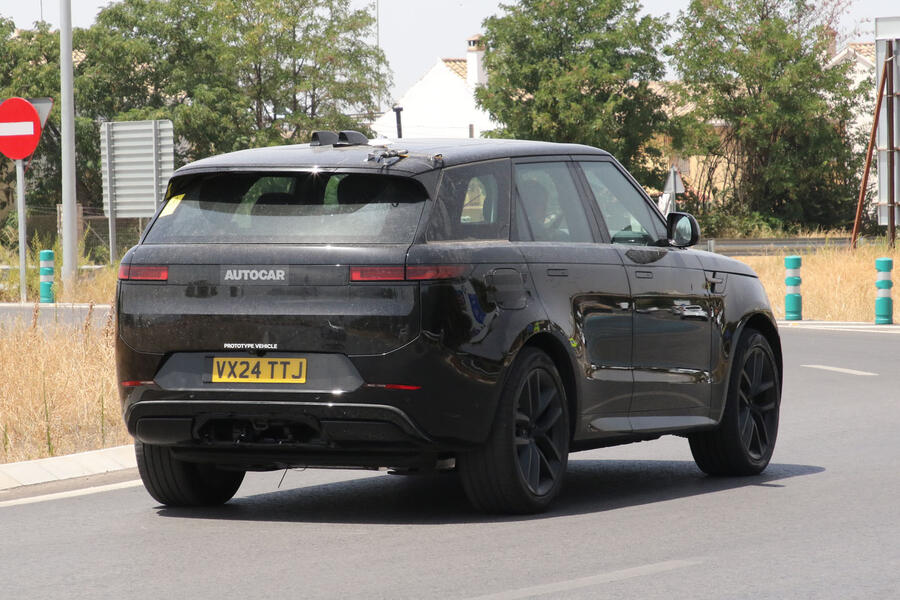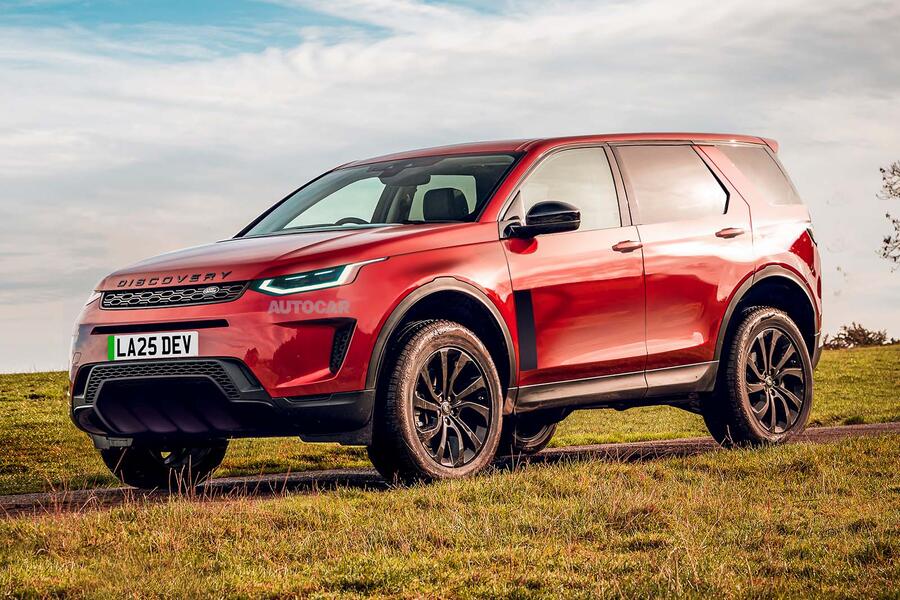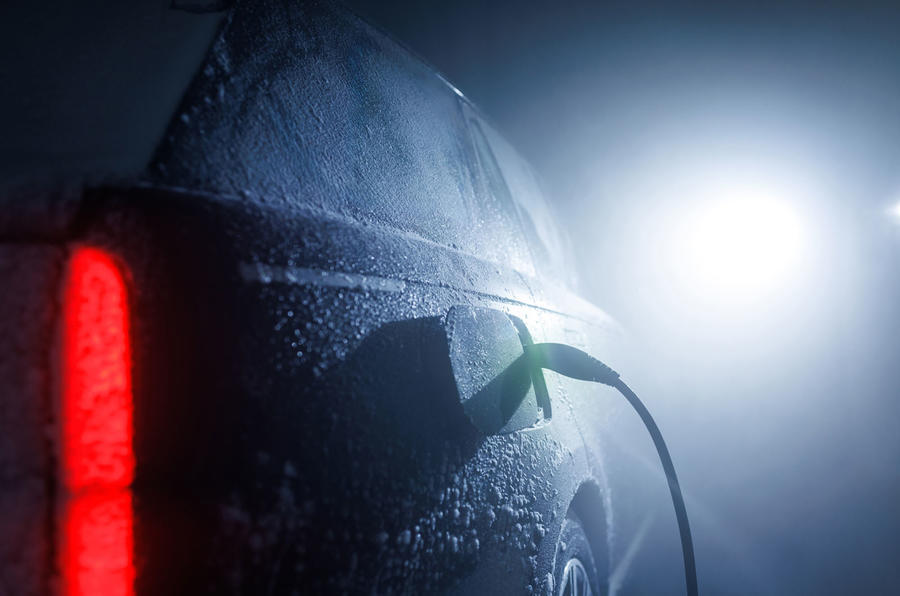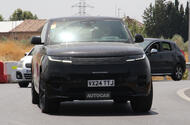Four Range Rover EVs and two all-new electric Jaguars will be launched by 2026
The electric version of the Range Rover Sport is being readied ahead of its reveal later this year as a high-powered rival to the likes of the Lotus Eletre and Porsche Cayenne EV.
One of six electric cars that JLR plans to launch by 2026 across the Land Rover and Jaguar line-ups, it has now been spotted testing in Spain, in prototype form.Â
The prototype wears several key changes over the petrol-engined Range Rover Sport, including a blanked-off grille (its pattern being the inverse of that on the regular version) and covers for the exhaust pipes.
Its battery pack can be seen set between the front and rear axles, and the charging port is expected to lie behind the conventional fuel filler cap, as it does on the more luxurious Range Rover Electric.
It comes as JLR adjusts its electrification plan slightly to enable additional development time and cater to shifting consumer demand.
When former JLR CEO Thierry Bolloré presented the company’s radical Reimagine transformation strategy exactly three years ago, the plan was to launch six Land Rover EVs and at least one Jaguar EV by that point.
Current CEO Adrian Mardell told reporters earlier this year that slowing down will ensure the new cars arrive on the market in the best form possible.
He said: “We talked about six Land Rovers by 2026. The reality is we’re likely to have six JLR products by 2026. We’re taking our time to make sure we put the best vehicles we’ve ever developed into the marketplace with that new technology.â€

According to Mardell, the EV delays will not have a significant impact on JLR’s operations.
He said: “We’re a little slower than we said three years ago. That really isn’t a business challenge for us today, for those other dynamics in the marketplace, and we’re fully committed to the macro schedule: every product will be electrified by the end of the decade.â€
Under the revised plans, the four Land Rover EVs being launched by 2026 will be the electric Range Rover and Range Rover Sport – both based on the versatile MLA platform that underpins the current combustion models – and two smaller SUVs based on the new EMA platform, thought to be replacements for the Range Rover Evoque and Range Rover Velar.
The flagship Range Rover EVs will be built in Solihull, while their more compact siblings will come from Halewood, where work has begun to prepare for EV production by the end of the year.
An EV replacement for the Discovery Sport and a new entry-level Defender model are also set to be launched on this platform in the coming years.

One of the two Jaguar EVs arriving by 2026, meanwhile, will be a rapid four-door GT. The other is set to be a large, luxurious SUV in the vein of the Bentley Bentayga.
Both will be based on a bespoke Jaguar architecture called JEA, and the brand will follow up with a BMW i7-rivalling electric luxury saloon on this platform shortly afterwards.
However, the reinvention of the Jaguar brand won't come before Land Rover’s EV line-up has taken shape, according to Mardell’s outline.
“The BEV going into MLA will be the next big thing,†he said, referring to the launch of the two Range Rover EVs, “and then our mid-range all-electric Land Rovers [EMA] will come next, and then Jaguar.
“Now the engineering cadence is coming, that won’t change. You can expect Jaguar within 12 months of our EMA launch, which will be within 12 months of our MLA launch.â€
The company’s plan shuffling comes as hype builds for the Range Rover EV, due later this year. More than 41,000 interested buyers have already signed up to the waiting list ahead of its launch in the coming months.
JLR remains tight-lipped on precise technical specifications but has revealed certain elements of its make-up, which will be carried over to the electric Range Rover Sport shortly afterwards.

Chief among these attributes is a four-wheel-drive powertrain that will give the same “go-anywhere†capability as the combustion Range Rovers – including the ability to wade at depths of up to 850mm.
It will also give straight-line performance that is “comparable†to today’s V8, which tops out at 626bhp in the new Range Rover Sport SV) to give a 0-62mph time of just 3.8sec – almost as quick as the Aston Martin DB12.
Emulating this broad spread of abilities is crucial to the success of the new electric Range Rovers, said Mardell, hinting that the cars could even be slightly delayed to allow engineers to refine the package.
“That’s essential for us, and if that takes a few more months to get to that point, then the team will be allowed to get to that point, because we can’t put these wonderful new products in the marketplace that loses some of the magic that we have in those vehicles today,†said Mardell.

Just as important is making sure both the electric Range Rovers have the EV performance credentials to allow them to compete effectively in an increasingly crowded segment.
We know that 800V charging hardware will be fitted to enable rapid top-ups – with a maximum speed likely to be north of 270kW – but precise details of the battery size and chemistry remain under wraps.
It is also still unclear whether the electric Range Rover duo will share any of their drivetrain componentry with any BMW models, in line with a partnership the two firms struck in 2019 to collaborate on the development of new electric drive units.
Notably, the similarly sized and positioned BMW iX is available with a range of twinmotor powertrains, offering from 326bhp to 619bhp – not too dissimilar to the range of outputs offered by today’s ICE Range Rover models – but there has been no word from either party on whether these will (or can) be carried over.
The MLA architecture was designed from the ground up to accommodate both combustion and pure-electric powertrains, so there needn’t be any significant structural revisions, and the interior is expected to be all but identical to today’s car as a result.
However, it will be more expensive than its fuel-burning sibling, in a bid to ensure the Range Rover model line’s healthy profit margins are sustained even with the introduction of a more costly EV variant.
Taking into account the current car’s pricing structure, and that of its rivals, the Range Rover Sport EV is likely to nudge six figures, even in base form.





